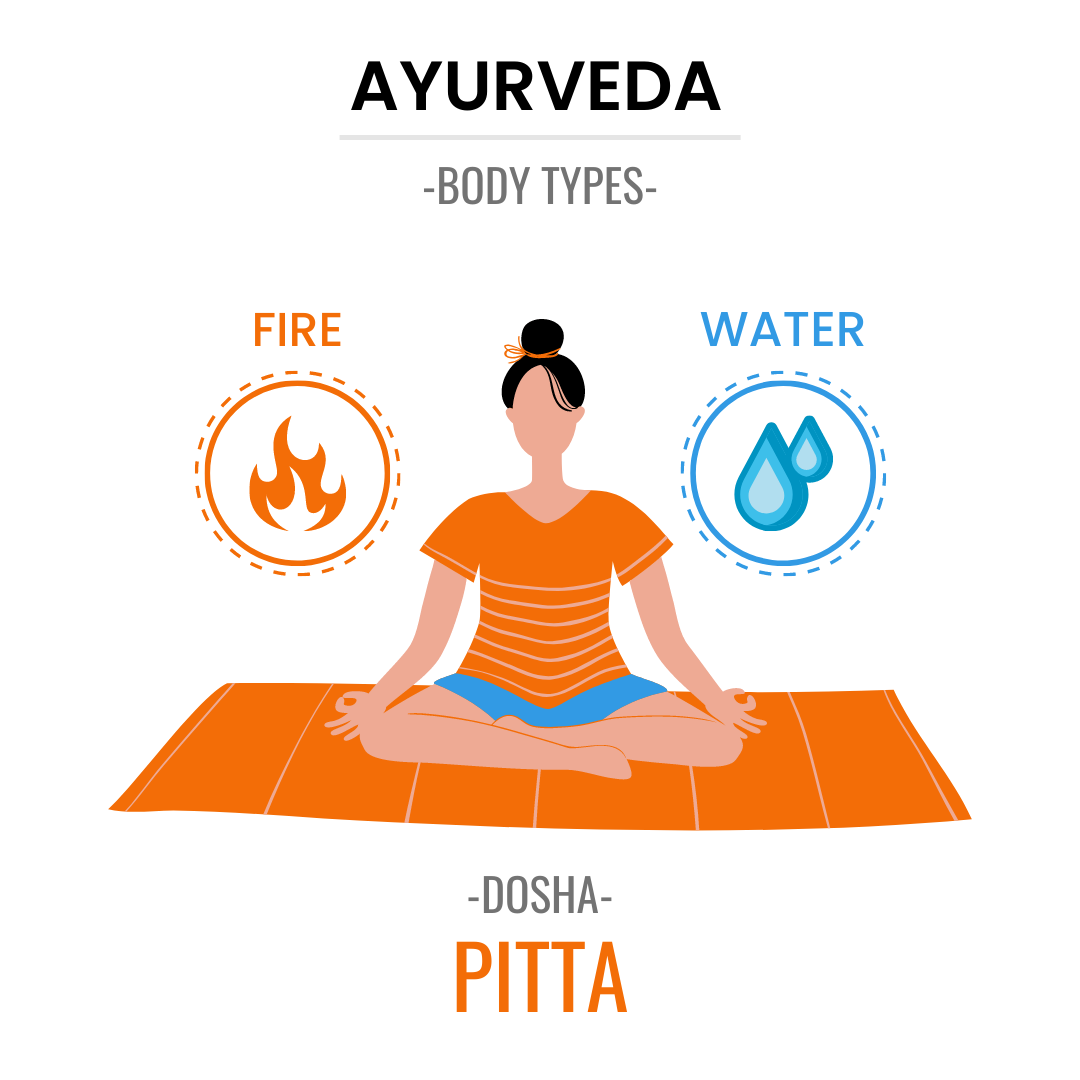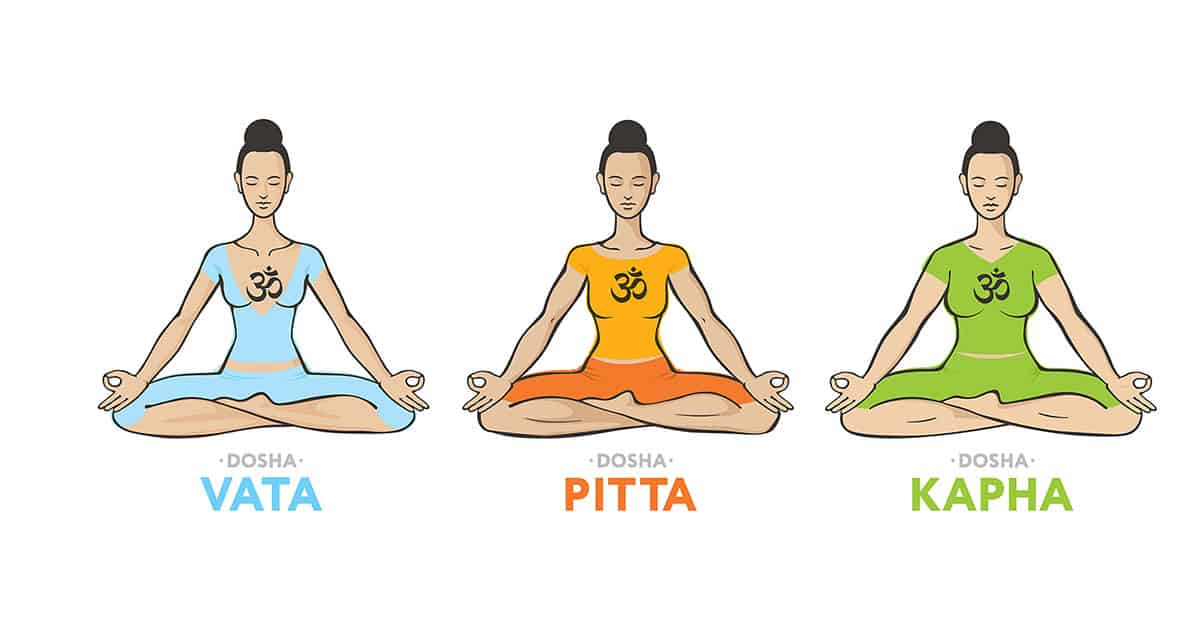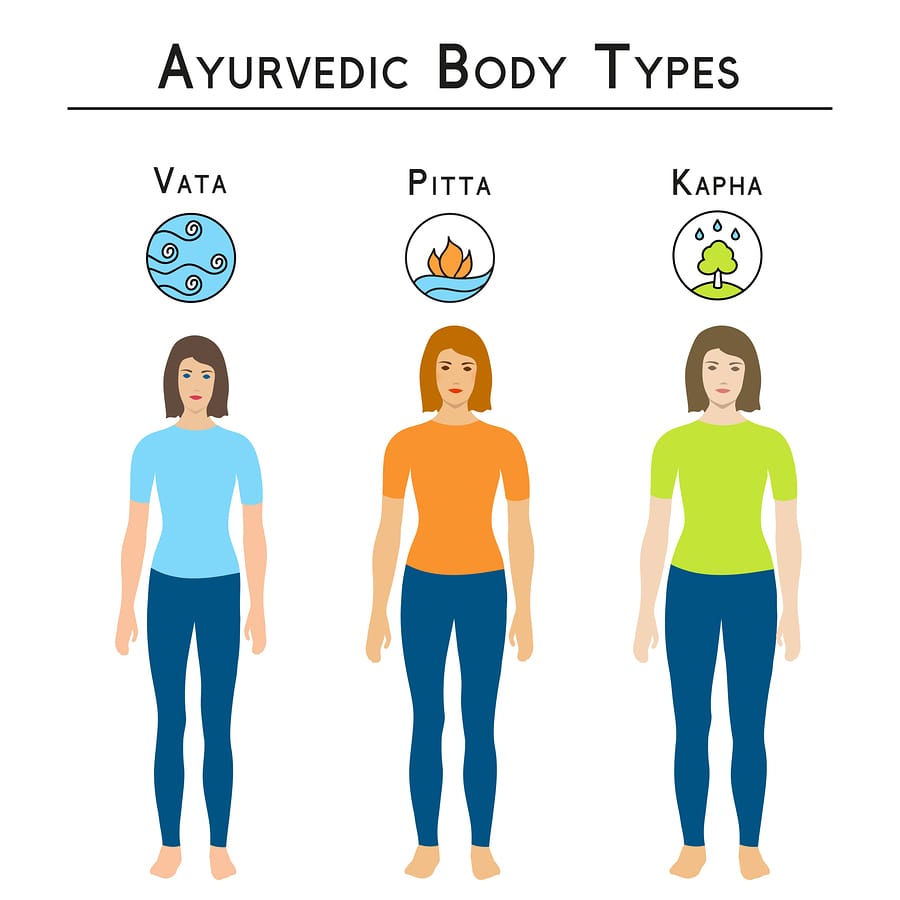
Pitta dosha ayurvedic physical constitution of human body type. Editable vector illustration
18 min Vata Pitta Kapha is the three Ayurvedic principles or body types known as doshas. These three doshas are a foundational concept in Ayurveda, an ancient Indian medicine system that has been around since the 2nd century BC. Knowing about Vata, Pitta, and Kapha is vital for anyone who wants good health and well-being.

Kapha dosha is one of the bodymind types in Ayurveda. This Kapha Dosha body type has unique
Your Ayurvedic body type, or constitution, is at the heart of Ayurveda's approach to well-being. Knowing your constitution allows you to maximize your quality of life, health, and happiness by following the recommendations for food and lifestyle for each constitution.

Ayurveda body types 01 Royalty Free Vector Image
Ayurveda recognizes each body as a unique body and states that there are three forms of forces, namely Vata Dosha, Pitta Dosha and Kapha Dosha that control various biological functions. Identifying the Ayurvedic Body Type is a basic fundamental principle for the ayurvedic treatment.

Understanding The Dosha and Ayurvedic body type Know yourself through Ayurveda Vedang Clinic
In Indian Ayurveda, there are mainly three types of body types—Vata, Pitta & Kapha. The doshas are described as biological energies found throughout the human body and mind. They govern the physical and mental processes and provide every living being with an individual blueprint for health and fulfillment.

Everything You Should Know About Ayurveda Body Types Sitaram Retreat
Ayurveda describes 7 basic body-types: Vata dominant Pitta dominant Kapha dominant Vata/Pitta (pitta/vata) - bidoshic body-type Pitta/Kapha (kapha/pitta) - bidoshic body type Kapha/Vata (vata/kapha) - bidoshic body type Vata/Pitta/Kapha - tridoshic body type which is rare

Know your Body Type as per Ayurveda Vata Pitta and Kapha Doshas Explained
The kapha body type is well-built with strong muscles and heavy bones. They particularly love sleep and food and their slow digestion and metabolism lends itself to a tendency to gain weight. While not naturally athletic, they have great stamina and strength. Kaphas are very grounded and reliable and generally enjoy the best health of all the.
/doshas-vata--pitta--kapha--ayurvedic-body-types-858691512-5cb041d587d249eaaca6142c0e09edd7.jpg)
Three Types of Dosha Metabolic Types in Ayurveda
In Ayurveda, there are three main body types, or doshas: vata, pitta, and kapha. We are all unique blends of each. Take our Ayurvedic Body Type Dosha Quiz to learn which quality you have most of. Take Dr. John Douillard's Dosha Quiz Receive $10 off your next purchase at our Ayurvedic store Why Do Ayurvedic Body Types Matter?

What is Ayurveda? Understanding The Three Doshas Ayurveda, Ayurvedic healing, Ayurveda yoga
75 of The Top 100 Retailers Can Be Found on eBay. Find Great Deals from the Top Retailers. eBay Is Here For You with Money Back Guarantee and Easy Return. Get Your Ayuveda Today!

Ayurveda Body Types Vata Pitta Kapha Find your Dosha
Pure Vitamins for Vital Energy & Health - Find Your Boost. Your One-Stop Vitamins Australian Store for Ultimate Nutrition Support

Vata dosha ayurvedic physical constitution of human body type. Editable vector illustration
Ayurveda is an ancient science that focuses on helping people live a long and healthy life. Sarah Otto-Combs, a certified Ayurvedic Practitioner, explains the three doshas of Ayurvedic philosophy that make each individual unique, and how to determine your prakruti, or constitution type as well as recommends on the best diets and foods to eat for your body type.

Doshas Vata Pitta Kapha Ayurvedic Body Types Stock Illustration My XXX Hot Girl
Body type is the variation in percentage of vata, pitta and kapha (air, fire and water) in our body. Based on the present dosha state or vikruti, suitable therapies, oils, medication, advice or more may be prescribed. In Ayurveda, there are mainly three body types—Vata, Pitta & Kapha. The first step in living in accordance with Ayurveda is.

What is Ayurveda and how will it improve your health? Mother Of Health
The 3 Ayurveda Body Types are vata, pitta, and kapha. Body types are also known as Doshas and they each represent a union of 2 of the 5 elements and will manifest in people through different physical, emotional, and mental characteristics. A quick and simple guide is below: Vata: the union of ether (space) and air.

Ayurveda Body Type has all your health secrets Jeewith
The ancient health science of Ayurveda is built around the five elements of ether, air, fire, water, and earth. The unique combination of these elements come together to make up the doshas, or constitutions—vata, pitta, and kapha.Each dosha has a number of corresponding qualities that are expressed in the physical, emotional, and mental aspects of one's being.

Ayurveda is based on the concept of bioindividuality that each person has innate differences
In Ayurveda, the most basic building blocks of the material world are the five elements: ether (space), air (wind), fire, water, and earth. Vata is characterized by the mobile nature of Wind (Air) energy. Pitta embodies the transformative nature of Fire energy. And Kapha reflects the binding nature of Water energy.

Ayurveda Vector Illustration With Doshas Symbols And Women Ayurvedic Body Types CartoonDealer
The 3 Ayurveda Body Types Explained: Vata Pitta And Kapha Written by Chalotte Fruergaard Ayurveda Last Updated: September 24, 2023 10:48 am Ayurveda body types suggest that each of us is different and made up of constituent elements in different proportions. Let's dive deep into what the wisdom of Ayurveda says about different body types.

Ayurveda 3 Body Types What You Need To Know MSHaque
Ayurvedic Body Type. The system of Ayurveda has its roots in the Indian subcontinent and is as old as the ancient scriptures of that country. This practice of health science describes all that affects the mind and body to any extent. Ayurveda explains health as a sound balance of the body and mind with the external and internal environment.